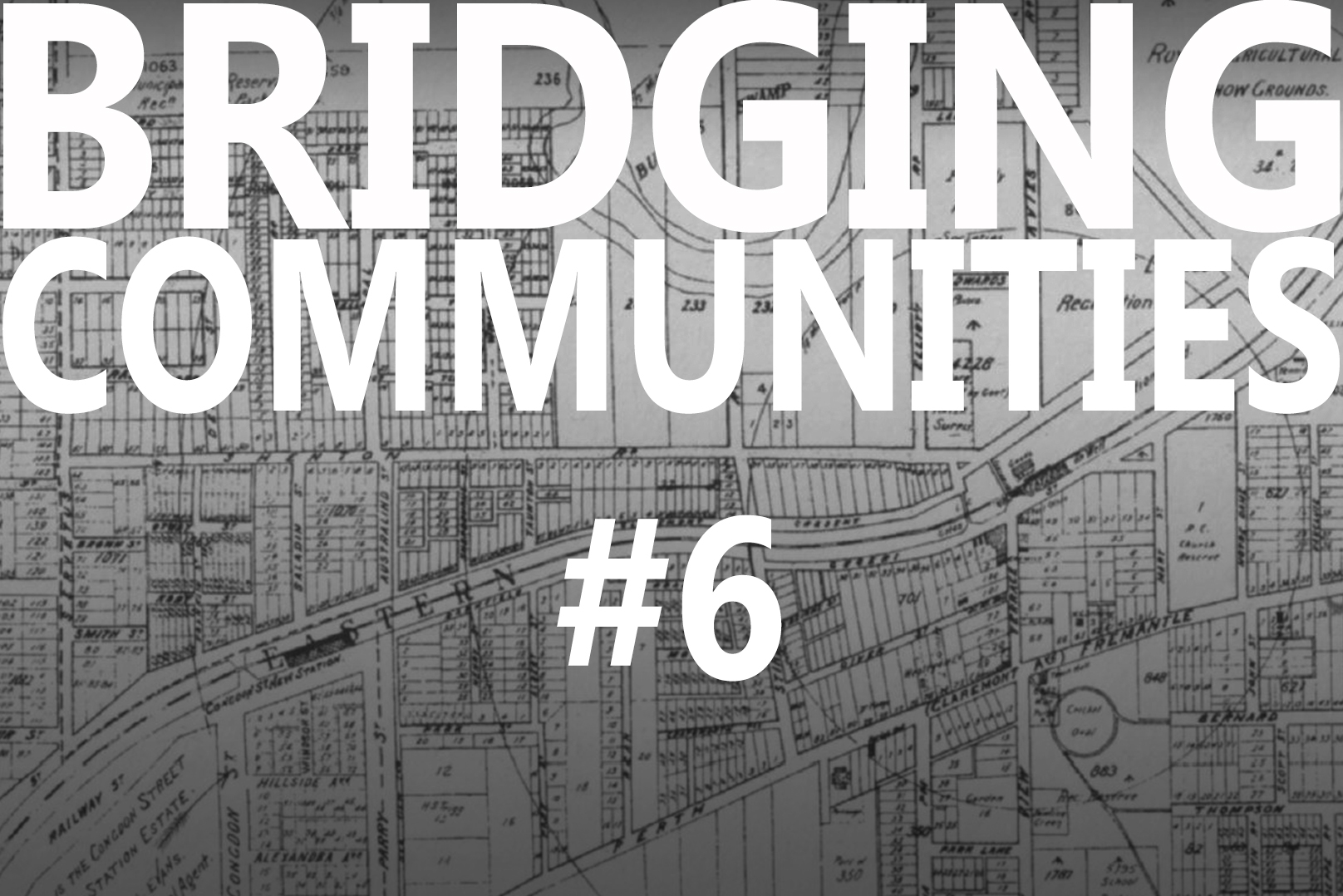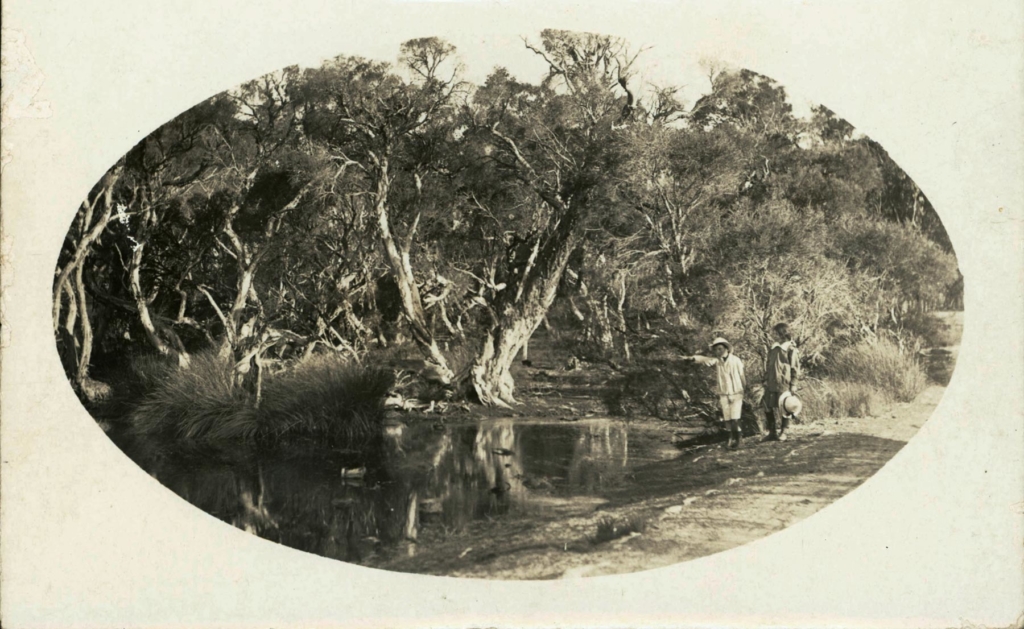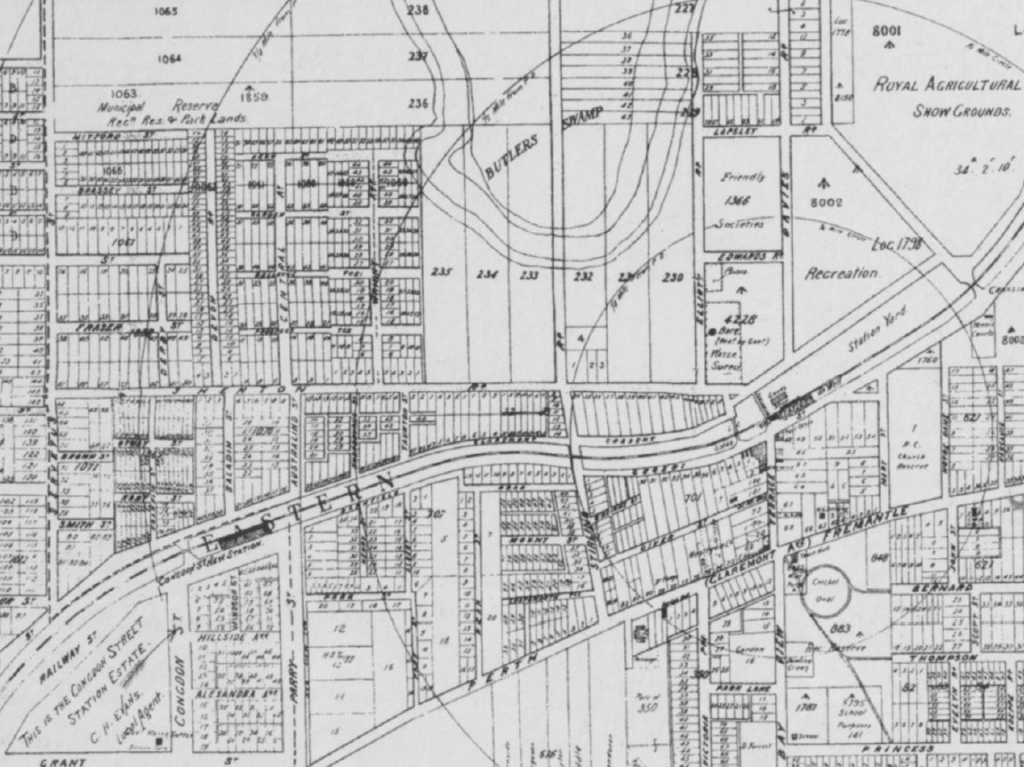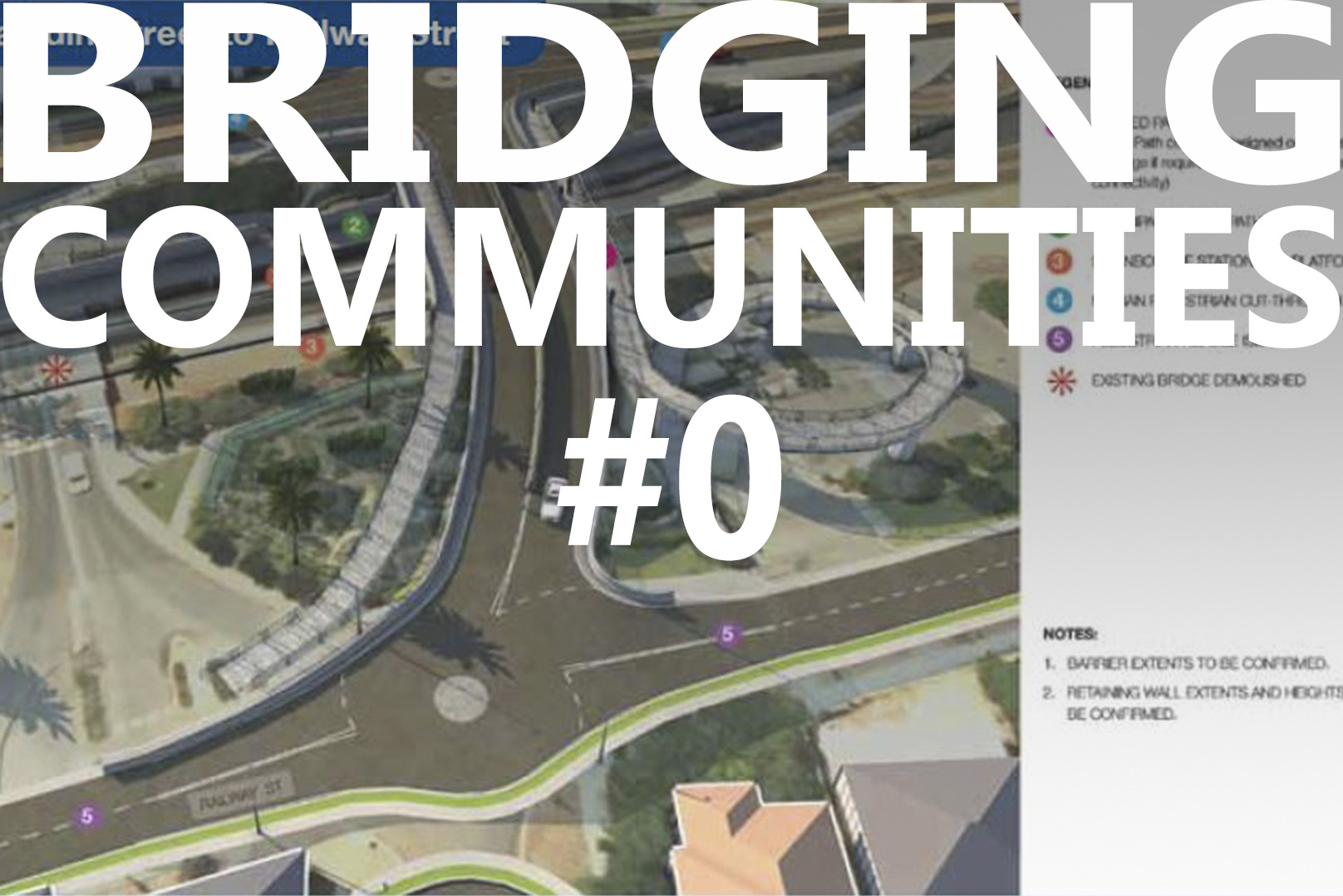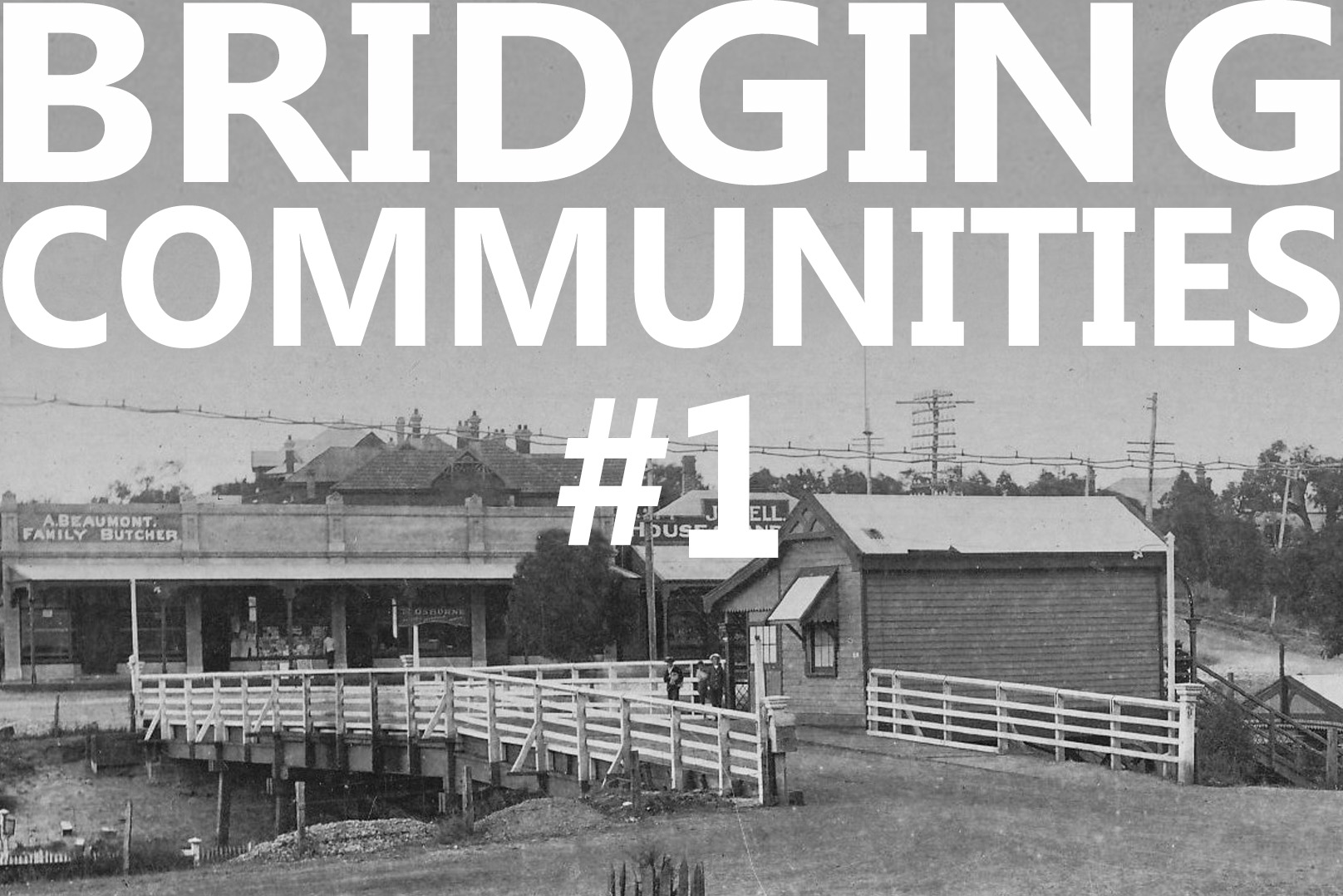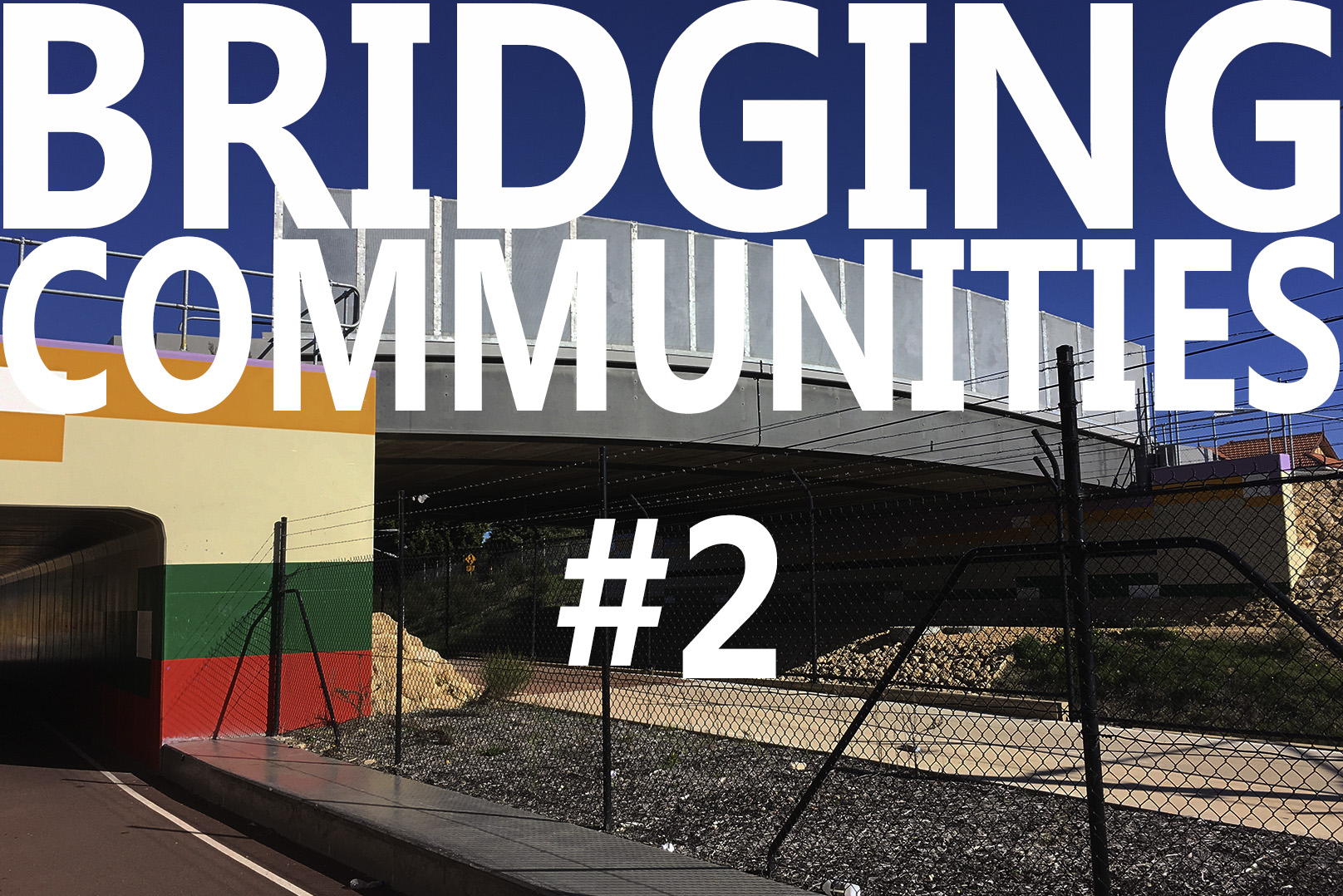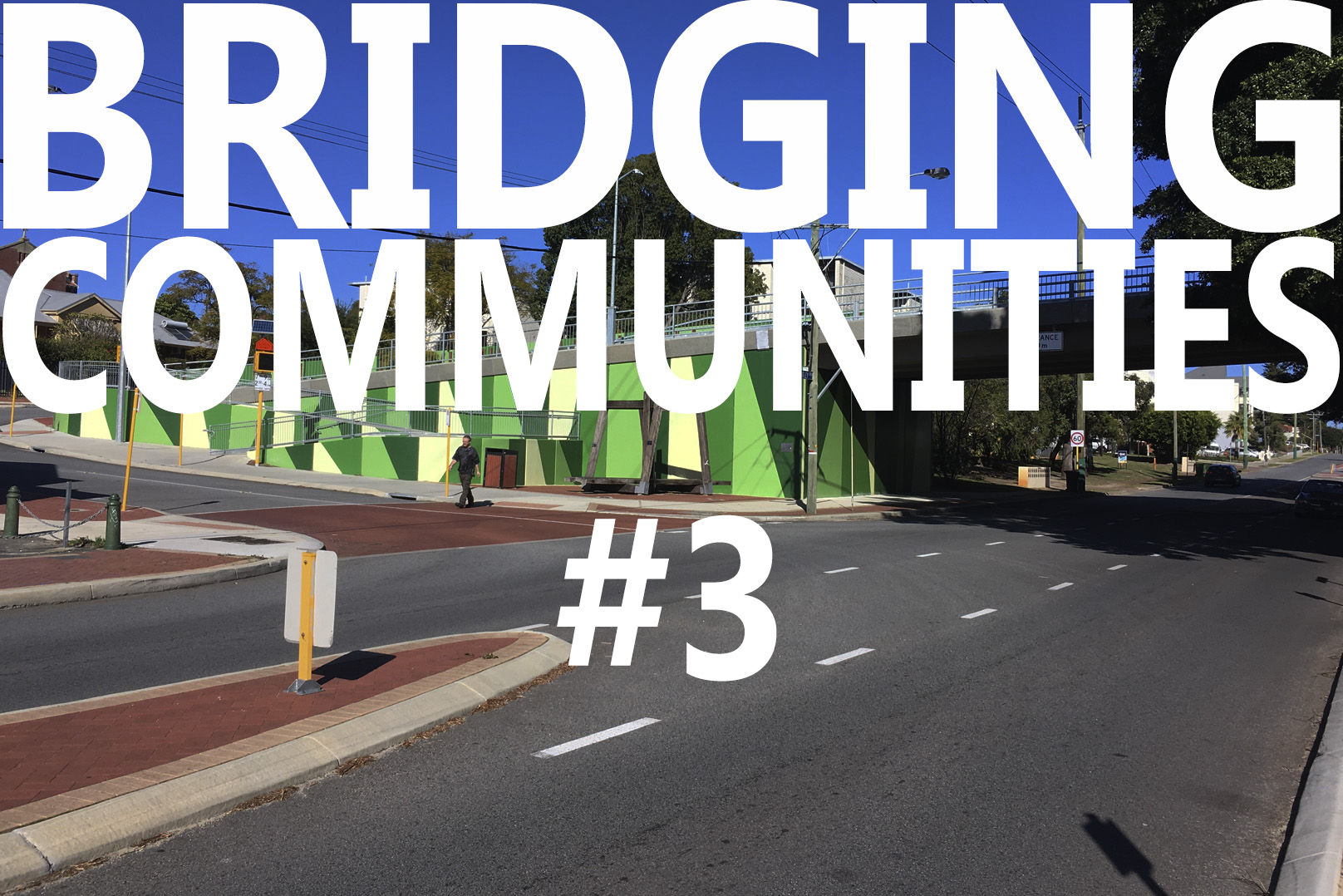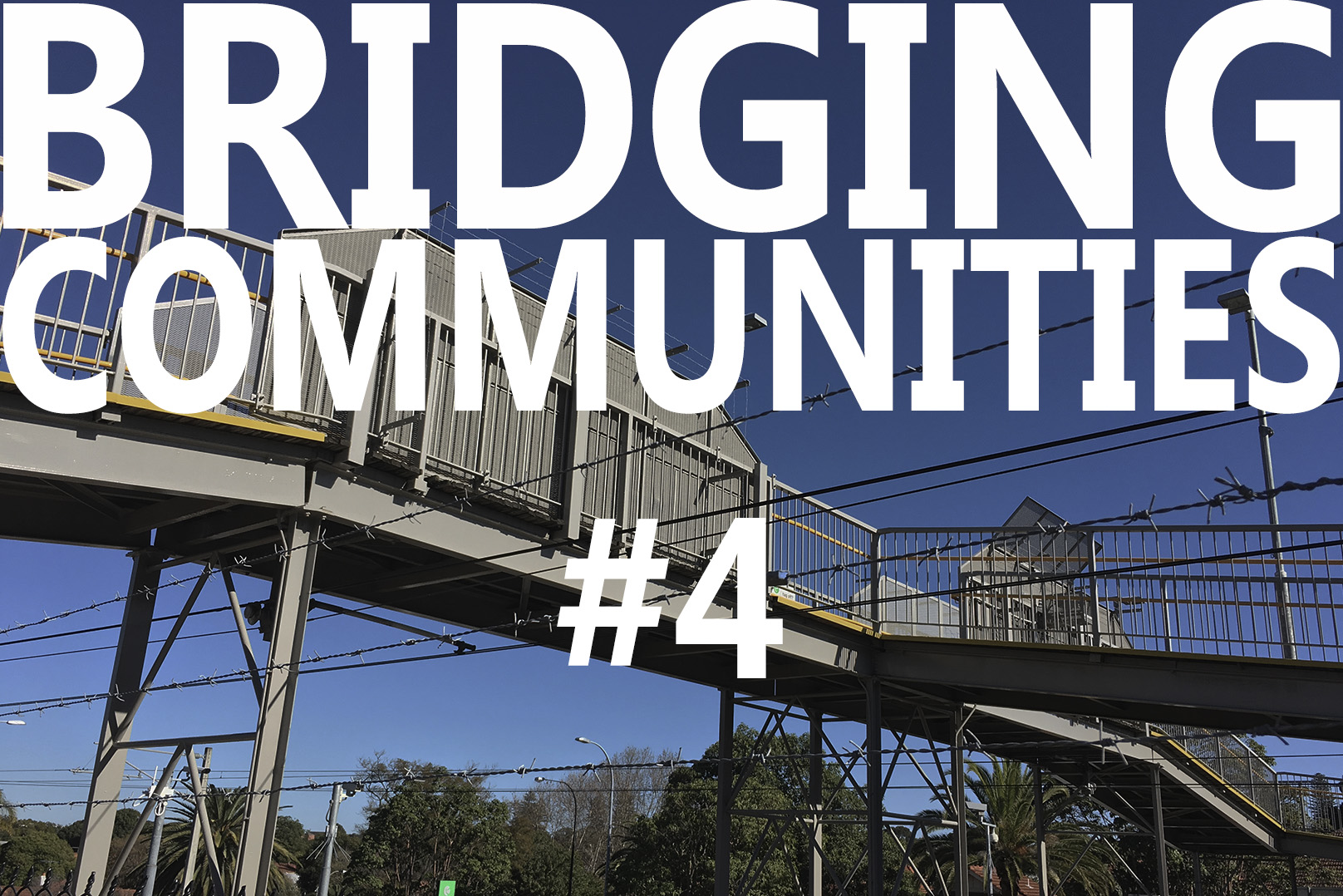Part of a series of posts by Neil Cownie on The Future of Swanbourne Village
European influence in the Swanbourne precinct seems to have commenced around the late 1880.
From the State Heritage WA website:
“Claremont Crescent developed from the late 1880s with a mixture of brick and weatherboard houses and middle class and working-class residents. The Swanbourne railway station, initially known as the Congdon Street station, opened in 1904 and directly opposite it a group of shops were established on the Crescent, some replacing earlier weatherboard houses. A photo of the shops, dating from c.1920s-1930s, shows a neat homogenous group with a timber floored verandah running their length. The Swanbourne Hotel (Inter-War Art Deco) was located on the adjoining corner of Franklin Street. Over the years the shops have undergone changes and rebuilding.
Claremont Crescent Shops Heritage Area represents a way of life and has demonstrated a resilience to accommodate changes of use, to still be relevant in contemporary society. The extent of Inter-War development is significant and is a rarity of commercial heritage areas. The form of some of the shops has changed and demonstrates historical connections. The Area also represents a sense of place for generations of residents who have utilised the various services over time, coming together in informal meetings at the ‘shops’, close to the Swanbourne Railway Station.
The small streets off Shenton Rd were named for the steamships plying the WA coast: Saladin, Australind, Otway, Rob Roy & Servetus.
The Station was first named Osborne, but later changed to Swanbourne to avoid confusion with Osborne Park.”
From the Town of Claremont website:
“The Perth – Fremantle line provided the impetus for both land speculators and land subdivision. It was opened in 1881 with a station platform called Butler’s Swamp. In 1886 the current Claremont Railway Station was built at Bayview Terrace a few hundred meters east of the original site. By 1895 . . . . . . occupation in the Lake Claremont area centred on Shenton Road and Davis Road. There was another node visible to the west around Otway, Rob Roy and Australind Streets. The remaining Aboriginal population had a permanent camp at Butler’s Swamp, a temporary camp near Richardson Avenue and another near Hammond Road. Swanbourne Primary School also opened in 1905 to service the children of the rapidly growing area north of the railway line. Population and housing grew steadily with surviving buildings from this period evident in Fraser and Wood Streets.”
From the State Heritage WA website:
“The Swanbourne area became more settled in the early 1900s with the advent of the railway and the establishment of the Claremont North State School in 1905 in Devon Road. Scotch College also moved to Swanbourne from Beaufort Street in 1905. The College purchased additional land on the Lake Claremont side of Shenton Road in the 1920’s. The name Swanbourne commemorates the English home of Thomas Francis Fremantle, 1st Baron of Cottesloe. He was the brother of Captain Charles Howe Fremantle RN, after whom Fremantle is named. When the Town of Claremont Rate Books commence in 1903 there were a total of 45 houses already built in Shenton Road. The majority of the 19 houses on the northern side of the street were concentrated between Devon Road and Stirling Road and were mainly brick with a few also in weatherboard and stone. By 1915, the end of the ‘Consolidation’ period, there were a further nine houses built in the street and four of these nine were built on the northern side between Derby Road and Servetus Street. In 1904 the Post Office Directory lists seven people living between Stirling Road and Devon Road. Two shops are first recorded on the corner of Devon Road & Shenton Road in 1905, occupied by fruiter Charles Knapp and grocers Tilley & Mugridge. These are the two shops at No.95 and 93, which had residential sections at the rear. By 1908, the fruit shop was being run by C. F. Williams and Tom Dawson had the grocery store. The shop at No.93 continued to be occupied as a greengrocer, and in 1920 Duncan Stewart, greengrocer and confectioner was in the place. In 1925 Mrs L. M. Dhue was running a tea room but by 1930 it was William Bealing’s mixed business. By 1938, Mrs Ada Harris was running the mixed business there and she remained throughout the war years to at least 1949.”
Interestingly the only other railway line crossing in the immediate area (the Stirling Road, Claremont under pass) previously saw Stirling Road pass straight through the centre of Lake Claremont. This road was seasonably trafficable until the then swamp land area was gradually reclaimed, turning the former swamp into a lake.
1904 map extract from ‘Claremont. A History’ by Geoffrey Bolton & Jenny Gregory (page 101).
Photo by Robert Frith.
Go back to the The Future of Swanbourne Village
The Bridging Communities Series
- #0 The Precinct - Swanbourne Bridge
- #1 Old Swanbourne Bridge
- #2 Third Avenue Bridge
- #3 Seventh Avenue
- #4 Mt Lawley Station Bridge
- #5 Swanbourne Aboriginal History
- #6 Swanbourne European History
- #7 Swanbourne Hotel
- #8 Koombana Bay Bridge
- #9 BIG Bridge Copenhagen
- #10 Circle Bridge Copenhagen
- #11 Tulhus Bridge - Erik Andersson
- #12 RV73 Bridge - Erik Andersson
- #13 The Architect Bridge - Erik Andersson
- #14 Ruyi Bridge - China
- #15 Cork Ireland Bridge - O'Donnell + Tuomey Architects
- #16 Bat Bridge - Next Architects
- #17 Leederville & Claremont Bridges
- #18 Dawson's Garden Centre
- #19 Swanbourne Village
- #20 Cottesloe Central Bridge
- #21 Showgrounds Bridge
- #22 Art Overlays
- #23 Swanbourne Village - Parameters - Levels
- #24 Swanbourne Village - Parameters - Community Hub
- #25 Swanbourne Village - A Better Way
- #26 Swanbourne Village – Call in the Cavalry
- #27 Sydney Light Rail Bridge
- #28 Hamilton Street Bridge, Subiaco
- #29 Compare the Pair
- #30 Opportunity not a Barrier
- #31 Rose Garden Bridge
- #32 Somers Town Bridge
- #33 Swanbourne Village – Original Bridge
- #34 Bayswater Bridge
- #35 Main Roads WA Scheme
- #36 NCA Scheme – The Big Picture
- #37 NCA Scheme – Master Plan
- #38 NCA Scheme – Relocated Dawsons Garden Centre
- #39 NCA Scheme – New Built Form
- #40 NCA Scheme – A New Community Pedestrian Bridge
- #41 NCA Scheme – Proposed Train Station Precinct
- #42 NCA Scheme – Swanbourne Village Market Day
- #43 NCA Scheme – Pedestrian environment
- #44 NCA Scheme – Cultural overlay
- #45 NCA Scheme – Centre of Excellence for a Sustainable Future
- #46 NCA Scheme – An Alternative Pedestrian Bridge Design

